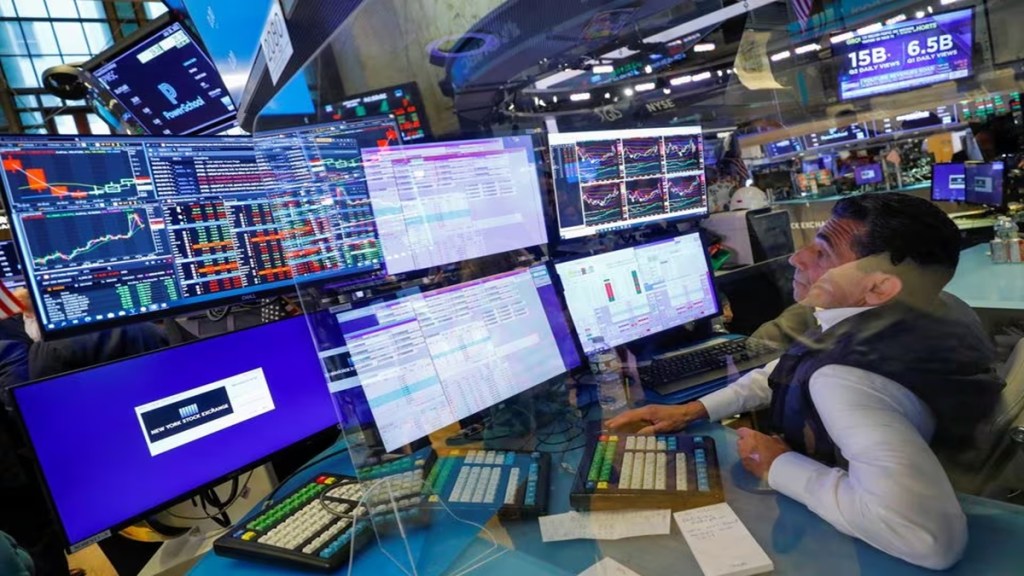The minutes of the US Federal Reserve’s Federal Open Market Committee (FOMC) meeting held last month are to be released today. The minutes from the FOMC meeting held on June 11-12, scheduled to be published on July 3, at 2 pm ET, will help global investors in understanding if the Fed’s policymakers have leaned towards being more dovish or hawkish in the past few months. As inflation is decelerating but still showing signs of remaining persistent, how the Federal Reserve officials are responding to it could be closely watched.
Here’s how inflation is trending lower
In May 2024, the yearly inflation rate in the US dropped to 3.3%, marking a decrease from 3.4% in April. When compared to the month before, the Consumer Price Index (CPI) remained the same. Meanwhile, core inflation slowed to 3.4% annually and the monthly core inflation rate fell to 0.2% from 0.3%, also better than forecasts of 0.3%
Here’s where the Fed’s fight against inflation stands: The US central bank is still concerned about the stickiness even if US inflation decreased from a peak of 9.1% in June 2022 to 3.4% in May 2024. The US CPI has averaged 3.2% for the past six to eight months. The US Fed has made it clear that a rate cut won’t occur until the country’s CPI falls to 2%. The central bank has maintained its key fed funds rate at a 23-year high since July 2022.
What’s on Powell’s mind?
Fed Chair Powell was speaking at the European Central Bank Forum in Sintra, Portugal. Michael Brown Senior Research Strategist at Pepperstone says, “Fed Chair Powell’s remarks at the ECB’s annual Sintra forum this afternoon sounded, at the margin, just a touch more dovish than those made of late, with the Chair noting that the US economy has made “quite a bit of progress” back towards the 2% inflation target, while also flagging that the economy is back on a disinflationary path, as suggested by the May CPI and PCE reports.”
José Torres, Senior Economist at Interactive Brokers highlights the Fed’s chief concern on the economy being pushed into a recession. Torres says, “Fed Chair Powell told attendees at the European Central Bank Forum in Sintra, Portugal, that US disinflation has resumed, and he is encouraged by recent data pointing to easing price pressures. The Fed wants more proof that this trend is continuing before cutting rates.
Powell also reiterated the Fed’s challenge of maintaining a restrictive stance to prevent a resurgence in price increases while ensuring that monetary policy is eased before the economy dips into a recession.”
US Markets Performance H1 2024
The S&P 500 index gained a whopping 14.5% to close the first six months of 2024. The Dow Jones Industrial Average rose 3.8% and the Nasdaq Composite climbed 18.1%.
Wall Street initially anticipated that the Federal Reserve might reduce interest rates as many as six times in 2024. However, currently, there is a shift in investor sentiment, with expectations that the Fed might lower rates as many as three times in 2024.
According to Torres, here’s what investors need to focus on – “ With conference attendees appearing to focus on a possible September rate cut, the next three months of inflation reports will be crucial for both investor sentiment and policymakers’ timing for turning dovish. June will likely show continued disinflation, but the potential results for July and August are less clear, raising the question of how many months of favorable data are needed before the Fed moves. While navigating a maze of economic data, the Fed is also cognizant of the upcoming November presidential election and the risk of appearing political if it shifts before voting begins, creating a deterrent for a September rate cut.”
Powell and the Federal Reserve have made significant progress, but achieving the 2% goal remains a long-term goal. The upcoming Federal Reserve meeting minutes will provide clarity on the monetary policy strategy. Antonio Ernesto Di Giacomo – Market Analyst Latam at xs.com says, “On July 2, 2024, Federal Reserve Chairman Jerome Powell expressed that inflation in the United States could align with the 2% target by the end of 2025 or 2026.”

